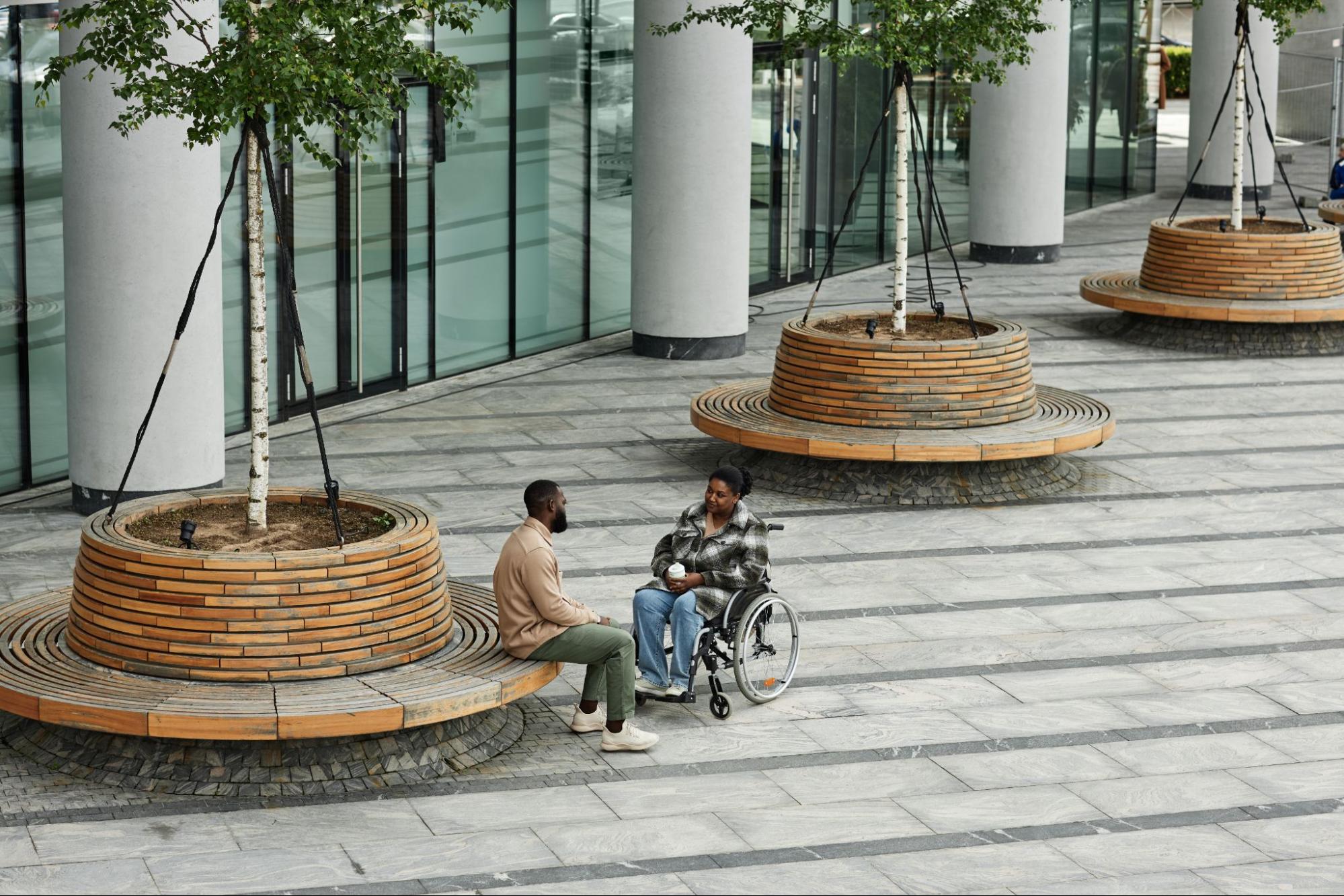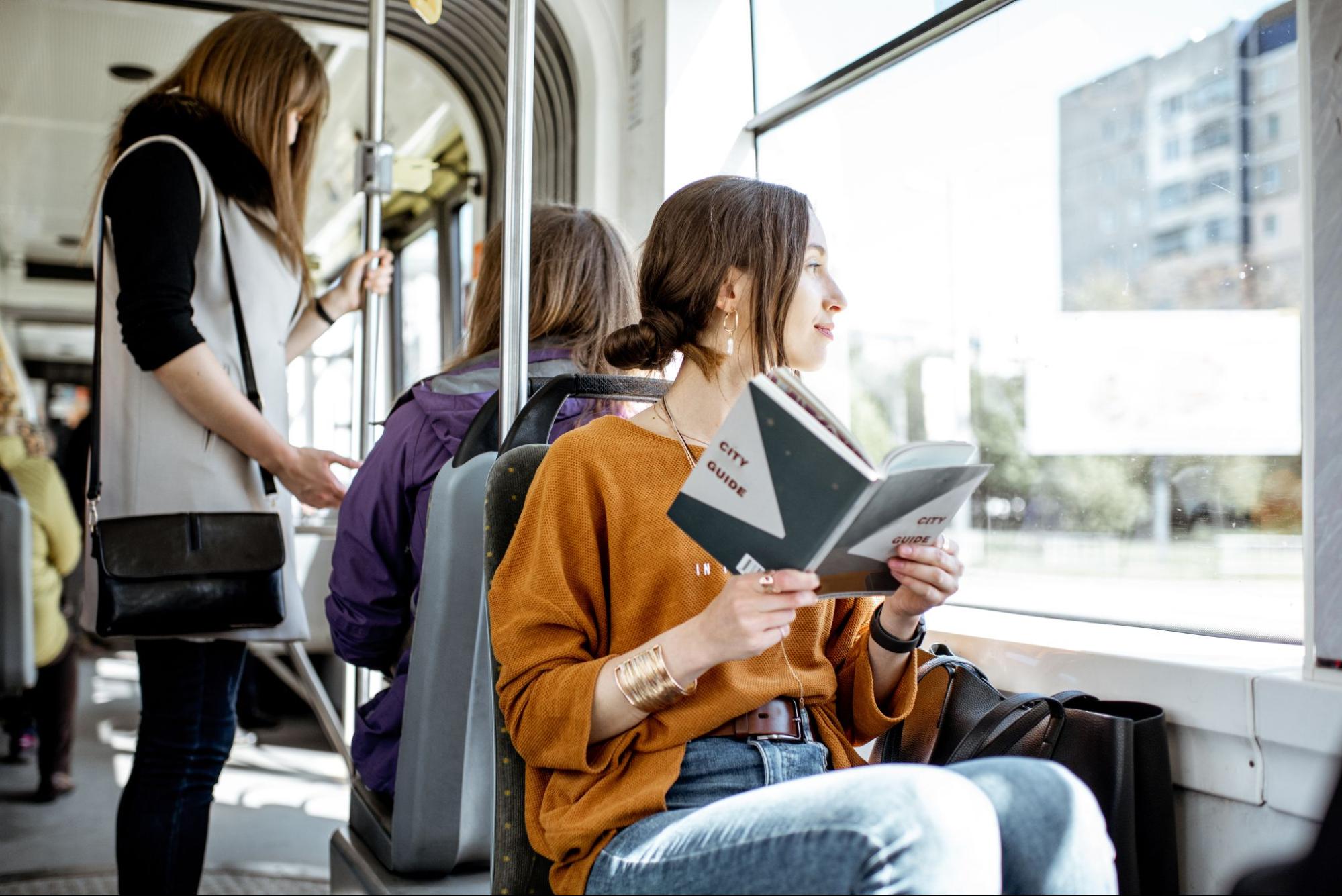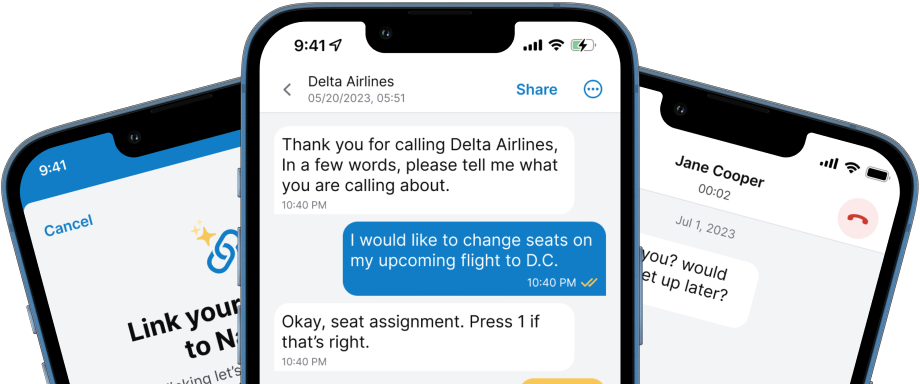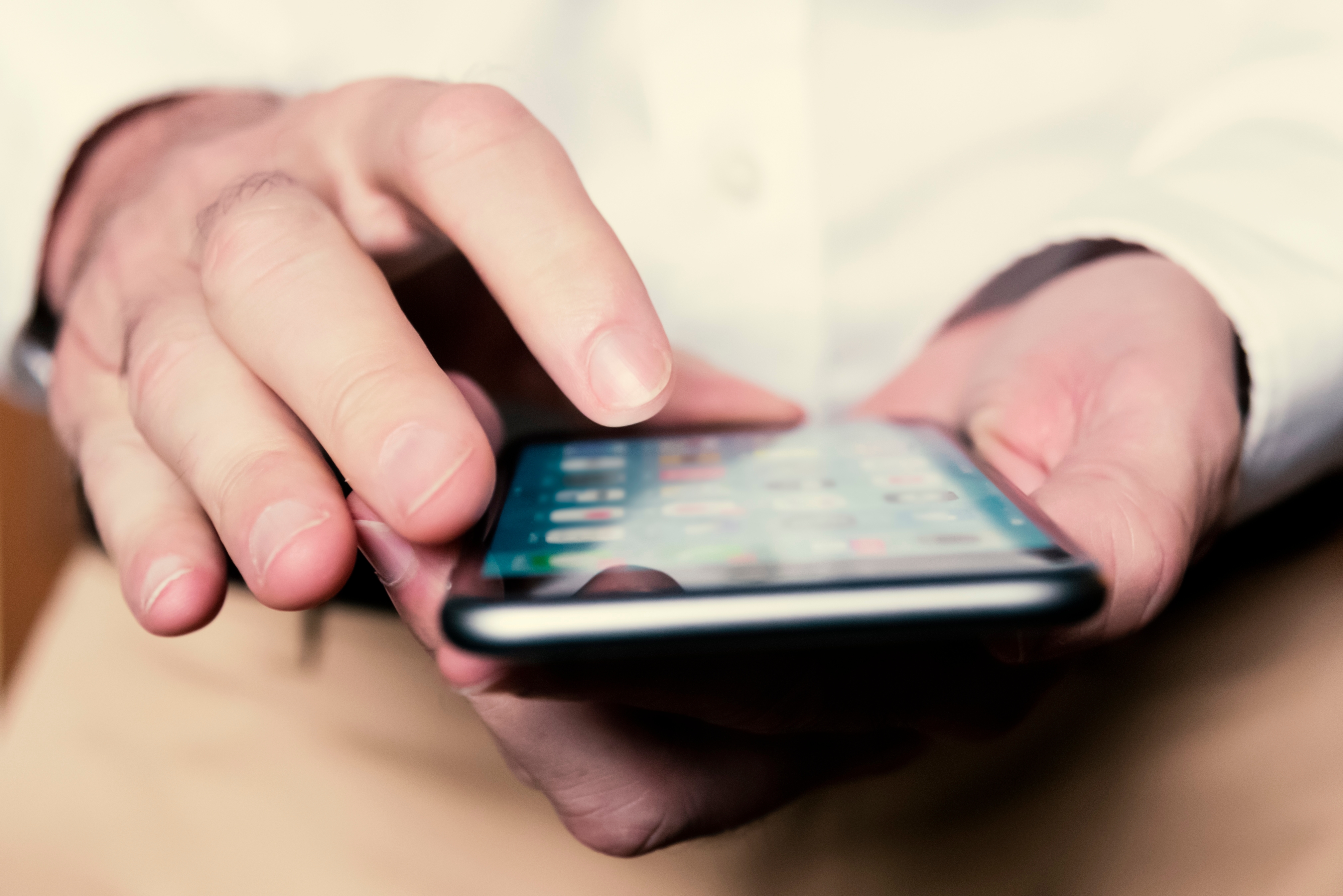Navigating Public Spaces: Overcoming Challenges for the Deaf
Read about challenges deaf people face in public spaces, ways to deal with those challenges and how Nagish can assist in overcoming them!

Challenges Faced by Deaf People in Public Spaces
Few are aware of the challenges faced by deaf and hard of hearing people daily. For many, it is their usual way of life, although there are days when navigating can be overwhelming. Understanding the barriers in public spaces for the Deaf Community involves some factors.
Barriers in Transportation
One common misconception many people might have is that deaf individuals cannot drive. According to the World Federation of the Deaf (WFD), this is not a baseless assumption since, in 26 different countries, deaf people are still not allowed to drive a car.
While they can and do drive like every other normal human being, many deaf individuals face systemic barriers to obtaining a license. Some have family members who may be uneducated on the basic rights of deaf people and won’t let them drive. It can also be a challenge to get accessible driving education. Additionally, deaf semi-truck drivers need a special waiver to be in the profession.
Public transportation also presents challenges. Airports and train stations rely heavily on PSA systems, benefiting hearing people. However, PSA usage means most deaf people are left out of critical updates such as delays, gate changes, and cancellations. Safety demonstrations on aircraft are rarely fully accessible for people who are deaf or hard of hearing. In my experience, most flight attendants will refer you to the printed brochure.
Communicating with taxi drivers can pose some difficulties, although Uber and Lyft recently enabled accessibility features in their apps to allow text-only communication, among other options. Nagish Live Transcribe, with speech-to-text capabilities, can also capture the exchanges between you and your driver!
Barriers in Education

Significant research recently showed that only 2% of deaf children globally have access to education in sign language. This is a leading cause of language deprivation, which can cause lifelong ripple effects in being underemployed, experiencing mental health struggles, and lacking meaningful relationships.
Education and language are the foundations for a successful life for many of us. According to the National Association of the Deaf (NAD), 70% of Deaf, DeafBlind, Deaf Disabled, and hard of hearing children in America do not have language access.
In addition, this can create an uncomfortable dynamic when Deaf people use interpreters. The reason is that many deaf users do not have the same access to their native language as interpreters undergoing many years of ASL study. Sometimes, this creates the need for a Certified Deaf Interpreter (CDI) to be a part of the interpreting team to bridge the language gap.
Barriers in Health
Unemployment often means deaf people go without quality health insurance, leading them to forgo needed health appointments or preventative care. Deaf individuals frequently struggle with obtaining interpreters for appointments, scheduling over the phone, and obtaining clear information about their health required for informed consent. Imagine getting an emergency surgery, and you couldn’t understand the critical communications around you or the specifications of what will be happening.
According to a medical study, Deaf individuals tend to use the emergency room over having a primary care provider. They are at higher risk for adverse outcomes compared to hearing Americans, especially with cancer, prenatal care, and birth due to unequal access.
Another component is navigating healthcare providers who might be uneducated about working with Deaf patients. When I was a first-time mom, the machine that monitored my contractions was broken, and I struggled, even with a hearing partner and ASL interpreter, to convince the labor nurse that I was experiencing labor pains – even up to my child’s birth. Stories like mine are unfortunately familiar in the Deaf community.
Barriers in the Workplace
Many Deaf people have wrestled with the big question when applying for jobs: Should I disclose my hearing status? There are pros and cons to either decision. Disclosing upfront may mean you could be denied the chance to have an interview. Disclosing later may be considered dishonest, though it may help you get your foot in the door.
According to the ADA, Deaf and hard of hearing people have the right to interpreters or other reasonable interview accommodations, but they are not always provided on request. Even after a successful job interview, accommodation struggles might still occur in many workplaces, such as meetings, performance reviews, and other workplace interactions.
Barriers in Society

The most significant barrier to deaf and hard of hearing people in society is prejudice or ignorance. Society harbors many myths and misconceptions. One common misconception is that lip-reading provides sufficient communication access. In “good conditions,” 30%- 40% of English sounds can be seen on the lips. Moreover, this doesn’t account for variables such as accents or facial hair.
Another myth is the idea that hearing assistive devices help restore hearing. What devices actually do is amplify sound. A severely deaf person may listen at the equivalent of hard of hearing levels with a hearing aid or cochlear implant. However, it is challenging for them to discern the sounds they hear daily, which often causes mental fatigue.
How Nagish Helps
Barrier-free Phone Calls
Nagish is a free app designed for deaf and hard of hearing individuals. Nagish uses artificial intelligence (AI) to convert text-to-speech and speech-to-text in real time. Our tech makes it easy to place and receive calls without hearing or speaking. Instead, you can type and read.
Furthermore, Nagish allows users to keep their existing phone number and link it to the app through number linking feature. It also provides captioning for voicemail messages, enabling users to read them at their convenience. On top of that, the app offers many other features, including the ability to connect to external hearing devices such as hearing aids or cochlear implants via Bluetooth connectivity, access to saved transcripts of phone call conversations, and a built-in spam filter.
With its diverse functionalities, the Nagish app empowers deaf and hard of hearing individuals to communicate in any situation requiring phone calls, whether it be scheduling doctor’s appointments, calling family members or friends, ordering a pizza, and many other scenarios.
Accessible Communication

In addition to phone call needs, Nagish introduced Live Transcribe – a free real-time communication for in-person interactions. Unlike many captioning apps, there are no word or time limits on its usage. Nagish’s Live Transcribe can be utilized in various settings, such as one-on-one conversations with your barista, doctor, family, and friends.
For an enhanced user experience, we recommend pairing Live Transcribe with a quality external microphone. For that reason, Nagish has curated a list of the best external microphone options that work seamlessly with Live Transcribe. The app also offers customizable font size settings for easy viewing.
Navigating Public Transportation: A Deaf Perspective

Are you aware of some ways that people who are Deaf can navigate travel and reduce communication barriers? Let's explore some of these inclusive communication solutions together!
Airlines and Flying
Having flown domestically and internationally as a Deaf traveler, I’ve picked up a few helpful tips. Number one is to download the specific airline’s app and the one for each airport. Within the airline app, you can enable push notifications and text messages. Notifications and text messages will alert you immediately to any changes to your flight plan, such as gate changes or delays.
In addition, the mobile app gives you access to your boarding passes and itinerary. Many airlines allow you to scan your boarding passes from your phone. Once on the plane, the app can alert a flight attendant, order food, or pay for Wi-Fi.
Within the airport app, you can view maps, pay for parking, track your luggage, order food from kiosks and pick-up, and even chat with customer service. You can also see arrivals and departures in real-time. If you don’t want to download several apps, position yourself while waiting in a location where you can physically view TV screens for any alerts.
When going through security, the universal gesture for “can’t hear” will let the officers know you need them to clarify their instructions. Also, taking advantage of preboarding will help alleviate anxiety about missing your boarding time and give you time to inform any flight attendant that you’re deaf or hard of hearing.
Buses and Trains

The Google Maps app has come a long way. I highly recommend using it when traveling by bus or train. You can see schedules and see accurately which bus or train to board to arrive at your destination. In addition, during your ride, you can see real-time movement on the map and know exactly where and when to alert the driver to your need to deboard. To enable these settings, see directions in Google Support.
Downloading the bus or train app is also helpful for purchasing tickets and seeing accurate schedules if one is available. Some buses and trains have TV screens for viewing the route and announcements. If these are available, sit near one.
Taxis or Ridesharing
Downloading ride-sharing apps like Uber or Lyft can help track updates and enable text communication with drivers. Enabling accessibility features and using Live Transcribe can also aid communication.
The Future of Deaf-friendly Public Design

It is long known in DEI spaces that building accessibility from the beginning is more cost-effective than adding it later as an afterthought. For example, it is easier to add wheelchair ramps in building blueprints than to figure out how to fit one in when space may be limited. Similarly, for the deaf and hard of hearing communities, there are many ways public spaces can be inclusive from day one. This is known as Universal Design.
Use of Space
The Signing Starbucks Store in Washington, D.C. serves as one example of this approach. It provides sufficient space for Deaf people to sign and communicate without feeling enclosed. Additionally, good lighting from multiple sources enhances visibility, which is crucial for effective communication.
Open floor plans, without bulky or oversized physical barriers like furniture or pillars, also improve sight lines. Wide hallways are beneficial not only for wheelchair users but also allow the d/Deaf to talk while walking side-by-side.
Mirrors and Windows
The addition of mirrors on walls lets people communicate with others across the room. Large windows improve lighting and allow communication access to people outdoors.
Ordering Kiosks
Kiosks empower d/Deaf individuals to independently place orders at restaurants and fast food locations, while smaller devices on the dining tables are becoming more common in more fine dining restaurants.
Building Acoustics
Improved insulation can help minimize echoes and sound barriers for hard-of-hearing people. Sound-absorbent furniture and wall coverings also help. In addition, soft music is a good way to reduce background noise.
Functional Furniture
Using furniture strategically can help enhance communication accessibility. Functional furniture, such as round tables and circular couches, facilitates visual communication by allowing people to see everyone at the same time. Moreover, proper placement of furniture is also important to improve traffic flow and prevent people from obstructing conversations.
Live Communication
An important feature is the use of technology to enable visual communication. TV screens can display order alerts, announcements, and any auditory information that would typically be a PSA.
Devices at customer service desks or reception areas can be set up to call virtual interpreters for sign language availability 24/7 or use voice-to-text apps for communication access. Improved signage, especially in large buildings, can improve independence in navigating layouts.
Conclusion
Deaf and hard of hearing people face numerous challenges navigating public spaces and daily life. However, with adequate preparation and some forethought by professionals, we can bridge the gap between d/Deaf and hearing society. We can create more inclusive environments by implementing practical solutions to overcome existing barriers. With time, it is hopeful that public design will evolve to better meet the diverse needs of the deaf and hard of hearing population worldwide. Through ongoing collaboration and commitment to accessibility, we can together strive towards a more inclusive society for all.





